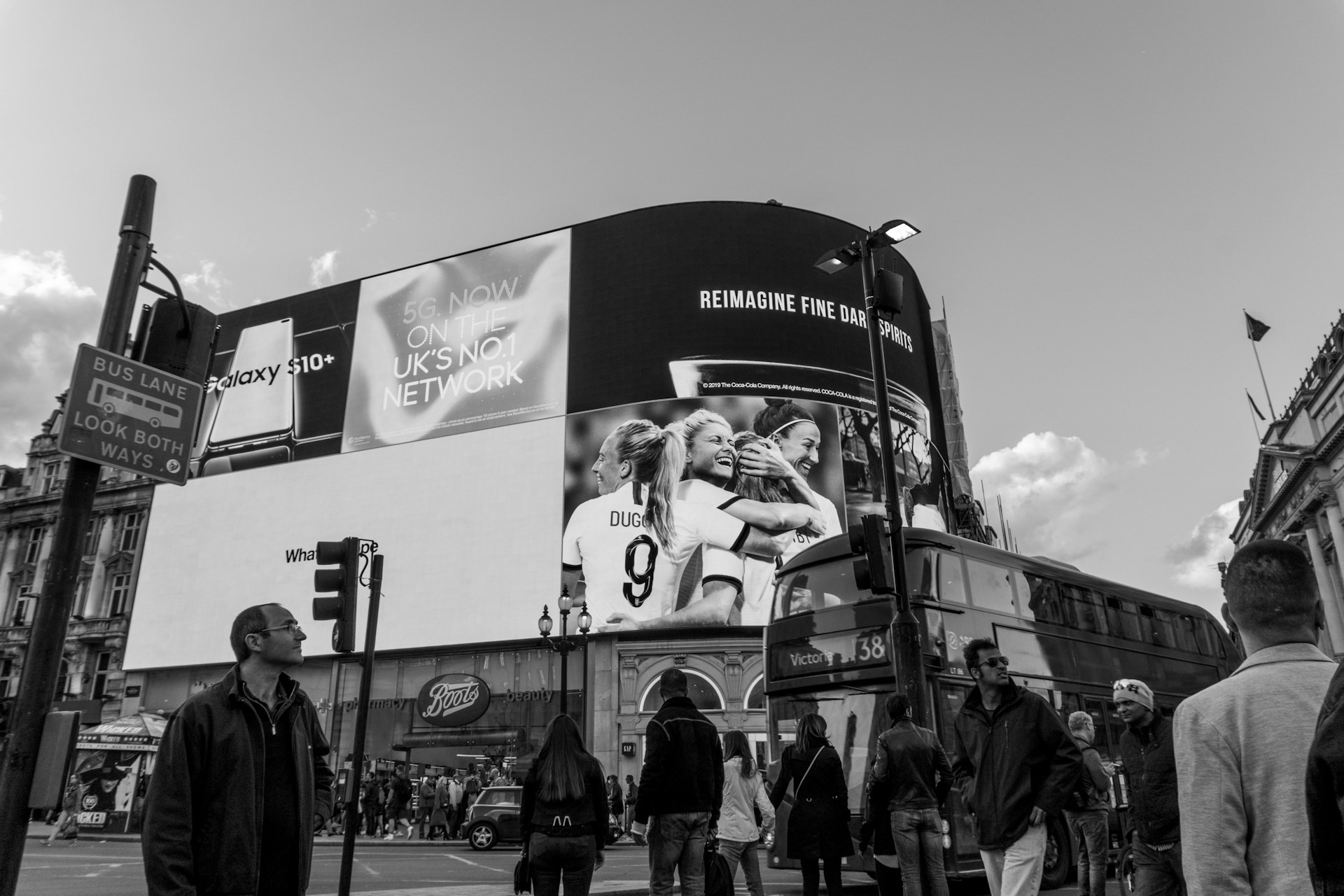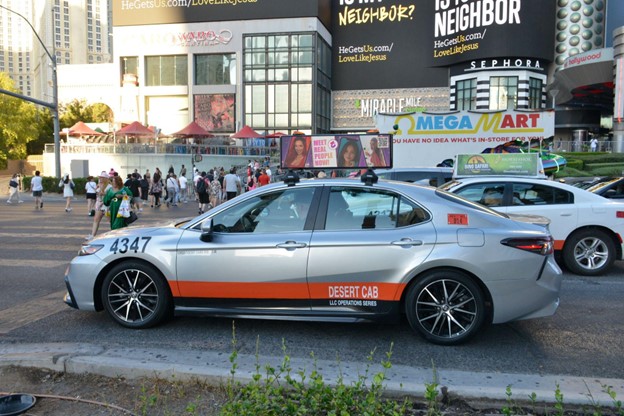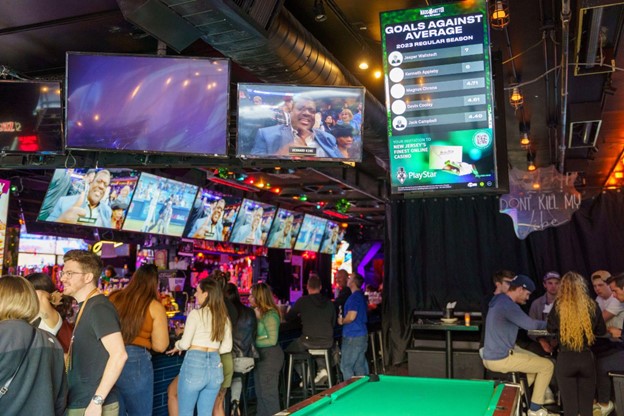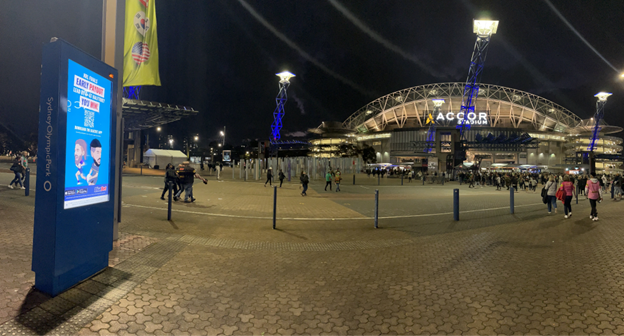

The world of igaming marketing can feel pretty locked in the digital world, but Mike Dodgson director of TBD.Media writes how there’s a growing avenue for igaming companies in the physical world. Using a case study from a client, Dodgson explains how a digital out-of-home ad experience can help boost online activity.
While not currently utilised to its full potential, using digital out of home (DOOH) advertising can be a valuable asset for igaming companies, especially when included in a marketing arsenal as part of a well-organised campaign strategy. In fact, according to a survey commissioned by the Out of Home Advertising Association of America (OAAA) last year, 73% of consumers view a DOOH ad as favourable, and 76% of consumers have taken an action as a result of seeing one. Those figures are staggering. It’s just one of the reasons why ad spend has increased by 48% globally since 2021 and is expected to surpass $25 billion by 2029.
The other reasons for the growth can be attributed to the interactive and eye-catching nature of the ads, which appear on taxi tops, digital billboards, transit platforms, retail kiosks, bars and entertainment venues, and much more.
Our strategy was to maximise the number of views to the target demographic as possible with an overall goal of seeing an organic uplift in website visitors and customers
The ability to programmatically buy this type of media via real-time bidding has also contributed to the growth, but here’s the real kicker: we can now track users who have been in the vicinity of a board if they visit the brand being advertised, or take a meaningful action.

What all of this means is a general increase in trust in the market, particularly in the igaming sector. Operators can utilise this growing medium in a relatively cost-effective way for mass awareness, and affiliates will certainly benefit from showcasing a well-known and trusted brand, no doubt improving the CTR and conversion rate in the process.
Both sides of the fence
At TBD.Media, we specialise in both sides of the fence. Our affiliate management team diligently works with operators and affiliate partners to strategise on the best possible outcomes for all parties. Concurrently, our media buying and paid media team work on promoting brands in the digital outdoor sphere in a way that is most likely to impact their target audience.
We believe in a highly tactical approach to DOOH, which may include precise geolocation, placement types, day of the week, time of day targeting, and the use of first-party data, all with a view to improvements in micro and macro conversions.

This is exactly what we did for a recent client of ours, PlayStar.com, a licensed New Jersey online casino. Our strategy was fairly straightforward, to maximise the number of views to the target demographic with an overall goal of seeing an organic uplift in website visitors and customers in two specific locations in the state.
For this, our paid media team worked with digital outdoor supply vendors, and our client, to curate a highly targeted list of venues to closely correlate with where ideal users might frequent or where there might be an element of high foot traffic.
In the case of PlayStar we saw an average increase in core brand terms of 121% compared with the previous period where we were not live, along with an overall website visitor increase of 16%”
In all scenarios and placement types, we can test various elements programmatically and set a real-time bid that is more or less aggressive according to the estimated impressions and CPM using some of the most advanced technology when it comes to media buying through our demand-side platform. Also, and most incredibly, we can use first-party data to predict lookalike audiences based on existing converting customers and show them an ad when they are in the range of a digital board.

Breath of fresh air
So how do we measure success? Well, GA4 will do some of the heavy lifting, along with Google Search Console, which will give a sense of the brand impact from organic query growth to a rise in SEM and direct visitors when drilled down to the locations in question.
In the case of PlayStar we saw an average increase in core brand terms of 121% compared with the previous period where we were not live, along with an overall website visitor increase of 16%, and a new user sign-up increase of 54%. To reiterate, all this happened in the specific regions we were advertising in order to isolate as much as possible the impact that the digital outdoor ads may yield.
As always, there’s never always a straightforward path, some markets are more evolved than others when it comes to DOOH, and the promotion of gambling brands can be restrictive at times
Of course, there are several factors to this. There are often many different channels of acquisition to consider, and out of home advertising generally will form part of the funnel nearest the top. However, in certain situations, we’re still able to tie back our efforts and correlate it back to an action using pixels implemented on the advertisers’ site. Providing users have their mobile device set up for geo-tracking, and iOS users have allowed tracking from within certain apps, we’re able to see an action available to us, and the subsequent value of that action.
For our highly targeted New Jersey campaign with PlayStar, website visitors, new signups, first time depositors and additional depositors were all captured as a direct result of those users seeing a digital out of home ad, meaning tracking a CPC, CPA and ROAS all become a real possibility with programmatic digital out of home advertising.

Never a straightforward path
Some markets are more evolved than others when it comes to DOOH, and the promotion of gambling brands can be restrictive at times. As with all our clients, we’re conscious of our responsibility when it comes to local regulations in any market and the nuances that go with it – restrictions or grey areas around advertising near school buildings or certain retail locations, for instance. In all cases, we work with advertisers extensively to best suit their needs for targeting and compliance.
In summary, what is particularly clear when it comes to DOOH is the future is programmatic. Along with the increase in ad spend, we’re likely to see more avenues open up, such as dynamic creative live odds; potentially high-impact city locations available via an online auction; and live televised sporting events opening up private group competitive bidding, generating higher revenues for publishers above and beyond traditional static prepaid agreements.
The increase in consumer trust from seeing an ad, the flexibility of spend and creative commitments along with the programmatic nature of media buying, not to mention the impact of tracking devices, makes DOOH a legitimate advertising channel that can’t be ignored.
Photo by Javier Martinez on Unsplash

Mike Dodgson
With an extensive background in paid media campaign management, Mike is co-founder of TBD.Media, a digital marketing and affiliate management agency with global igaming clients